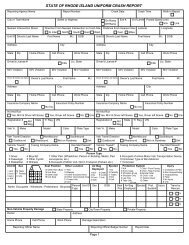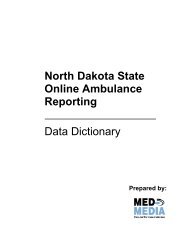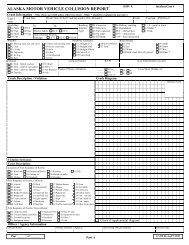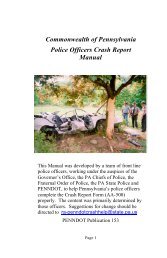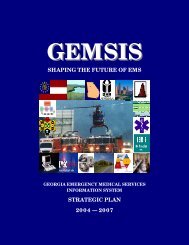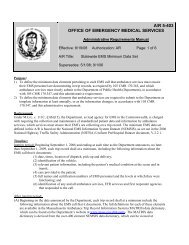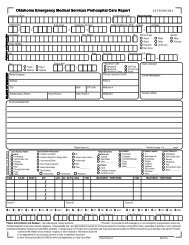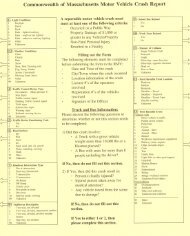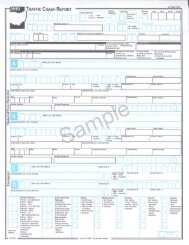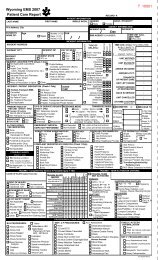North Carolina Crash Report Instruction Manual - NHTSA
North Carolina Crash Report Instruction Manual - NHTSA
North Carolina Crash Report Instruction Manual - NHTSA
- No tags were found...
You also want an ePaper? Increase the reach of your titles
YUMPU automatically turns print PDFs into web optimized ePapers that Google loves.
_____________________________________________________________________________________________Bridge - Parapet EndBridge – Parapet End: a low wall built along the edge of a bridge deck.Bridge – Pier or Abutment: a bridge pier is a support for a bridge structure other than atthe ends. A bridge abutment is the end support for a bridge.Bridge – Overhead Structure: any part of a bridge that is over the reference or subjectroadway. In crash reporting, this typically refers to the beams or other structuralelements supporting a bridge deck.Bridge: a structure, including supports, carrying a roadway, etc. over an obstruction suchas water, a railway, or other roadway, having an opening of 20 feet (6 m) or moremeasured along the center of the structure.Bridge – Rail: a barrier attached to a bridge deck or a bridge parapet to restrain vehicles,pedestrians or other users.Cargo Body Type: coded for buses and trucks over 10,000 pounds GVWR.Cargo Tank: a single-unit truck, truck/trailer, or tractor/semi-trailer having a cargo bodydesigned to transport either dry bulk (fly ash, etc.), liquid bulk (gasoline, milk, etc.), orgas bulk (propane, etc.).Cargo/Loss or Shift: the release of the goods being transported from the cargocompartment of the truck, or the change in the position of the goods within the cargocompartment.Cargo Released: the goods being transported by truck spill out of the vehicle cargocompartment.Carrier Identification Number: a unique number assigned by the U.S. Department ofTransportation, Interstate Commerce Commission, or by the state to a motor carrier.Carrier Name Source: where the name of the motor carrier was noted, be it the powerunit of the truck, the trailer, the shipping papers, or other documents.Carrier Name: the name of an individual, partnership or corporation responsible for thetransportation of persons or property.Cataclysm: a cloudburst, cyclone, earthquake, flood, tornado, or volcanic eruption.Center Line: a yellow pavement marking used to separate traffic traveling in oppositedirections. A center line need not be at the geometrical center of the pavement.Changing Lanes: a vehicle shift from one traffic lane to another traffic lane moving in thesame direction.Cited: driver or non-motorist issued a citation for actions which contributed to the crash.Clearzone Distance: the total roadside boarder area, starting at the edge of the traveledway, available for safe use by errant vehicles. This area may consist of a shoulder, arecoverable slope, a non-recoverable slope, and/or a clear run-out area. The desiredwidth is dependent on the traffic volumes and speeds, and roadside geometry._____________________________________________________________________________________________Page 72<strong>North</strong> <strong>Carolina</strong> DMV-349 <strong>Crash</strong> <strong>Report</strong> <strong>Instruction</strong> <strong>Manual</strong>



